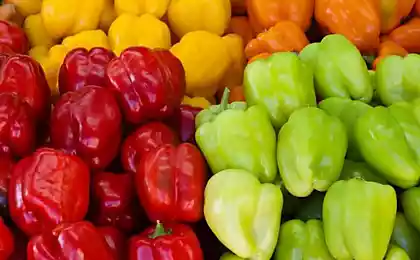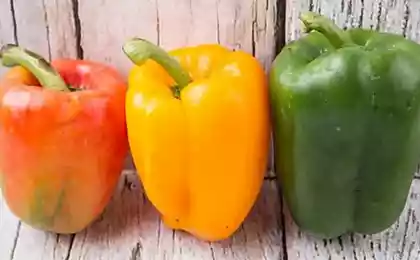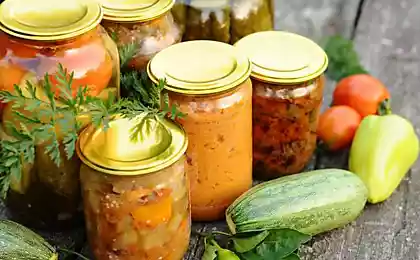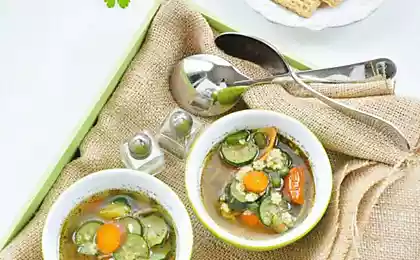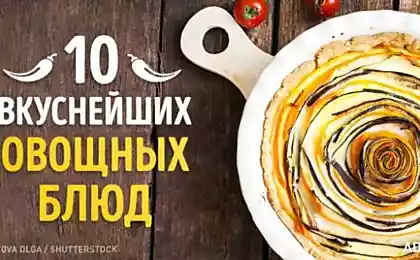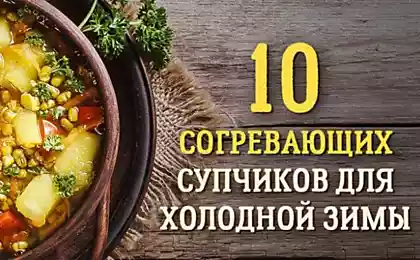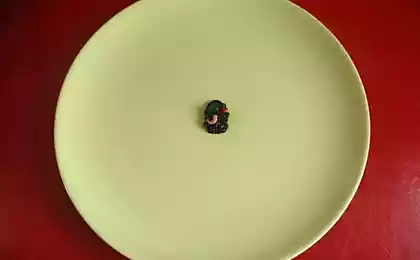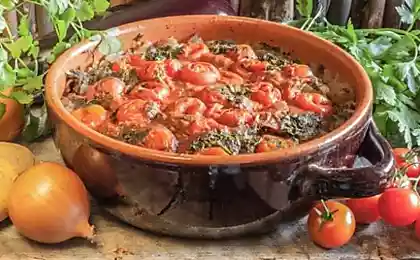126
How to properly clean Bulgarian pepper
When I have to peel a lot of Bulgarian pepper, my eyes begin to twitch. I can cut myself a hundred times while I cut the back of the pepper, sprinkle seeds all over the kitchen, and finally forget that it is more convenient to wash the vegetable from the very beginning than when it is cut.
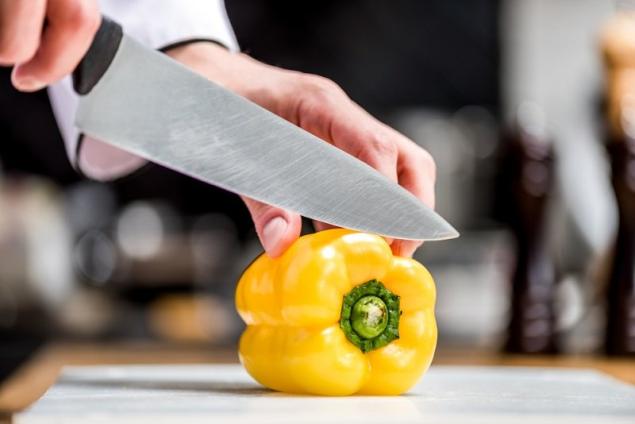
I was recently told how to avoid this pain. Pepper is cleaned literally in seconds, garbage from it does not crumble on the table, and it is very convenient to dispose of. Of course, in this article you will learn the technique of such cleaning, but first let’s talk a little about the Bulgarian pepper. What is this vegetable and how did it become Bulgarian?
This pepper is also called sweet, although there is practically no sugar in it. On the Scoville scale, he has 0 units of burning. So there's no capsaicin at all, which makes your tongue burn like other peppers.

Native to South America, its wild varieties are found all over the continent. From America, pepper was imported first to Western Europe, and from there much later to Eastern Europe, in particular, to Bulgaria. He has already arrived from Bulgaria.

It is no secret that sweet pepper contains many vitamins. For example, it has more vitamin C than any other vegetable and even lemon or orange. And it also contains vitamin P, which positively affects the body as a whole, and especially the heart and blood vessels.

What about BJU? Proteins, fats and carbohydrates were distributed in pepper (if you remove all water from it) as follows: proteins - 9.5%, fats - 11%, carbohydrates - 79.5%. In addition, it contains a large amount of fiber and only 27 kcal per 100 g of product, which in itself is useful for people losing weight or adhering to proper nutrition.

Fresh Bulgarian pepper It is often used as an ingredient for salads. It is stewed, fried, stuffed, cooked on the grill and on an open fire. So the ability to quickly clean sweet peppers will help you become a good cook, and also save a lot of time. Okay.
How to clean peppers quickly
As you can see, this tasty and healthy product can be used in many dishes, absolutely without worrying about the loss of time and cleanliness of the kitchen. Some just eat it raw because of the juiciness and crunch. Not a bad habit, as pepper is also an antidepressant.

However, even such a healthy vegetable will be contraindicated for people with a sick stomach, heart, liver or kidneys. If there is at least a suspicion of such ailments, it is best to consult a qualified doctor before use.

I was recently told how to avoid this pain. Pepper is cleaned literally in seconds, garbage from it does not crumble on the table, and it is very convenient to dispose of. Of course, in this article you will learn the technique of such cleaning, but first let’s talk a little about the Bulgarian pepper. What is this vegetable and how did it become Bulgarian?
This pepper is also called sweet, although there is practically no sugar in it. On the Scoville scale, he has 0 units of burning. So there's no capsaicin at all, which makes your tongue burn like other peppers.

Native to South America, its wild varieties are found all over the continent. From America, pepper was imported first to Western Europe, and from there much later to Eastern Europe, in particular, to Bulgaria. He has already arrived from Bulgaria.

It is no secret that sweet pepper contains many vitamins. For example, it has more vitamin C than any other vegetable and even lemon or orange. And it also contains vitamin P, which positively affects the body as a whole, and especially the heart and blood vessels.

What about BJU? Proteins, fats and carbohydrates were distributed in pepper (if you remove all water from it) as follows: proteins - 9.5%, fats - 11%, carbohydrates - 79.5%. In addition, it contains a large amount of fiber and only 27 kcal per 100 g of product, which in itself is useful for people losing weight or adhering to proper nutrition.

Fresh Bulgarian pepper It is often used as an ingredient for salads. It is stewed, fried, stuffed, cooked on the grill and on an open fire. So the ability to quickly clean sweet peppers will help you become a good cook, and also save a lot of time. Okay.
How to clean peppers quickly
- Wash the peppers well under running water. Then take the pod in one hand, and the other grab the tail (which is attached to the stem) and squeeze it inside.
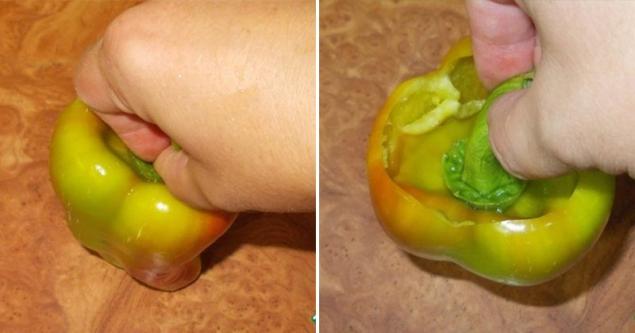
- Under the force of pressing the tail will fall inside the pod. Keep holding on to the ponytail and swipe it several times in one direction. Get an unnecessary core of seeds.

- Tap pepper on the kitchen sink several times so that the remnants of the seeds pour out. Use pure pepper for cooking, for example, prepare Bulgarian pepper for winter.

As you can see, this tasty and healthy product can be used in many dishes, absolutely without worrying about the loss of time and cleanliness of the kitchen. Some just eat it raw because of the juiciness and crunch. Not a bad habit, as pepper is also an antidepressant.

However, even such a healthy vegetable will be contraindicated for people with a sick stomach, heart, liver or kidneys. If there is at least a suspicion of such ailments, it is best to consult a qualified doctor before use.
Advice of an experienced summer resident on growing seedlings
How to cook beef without oven and oven



